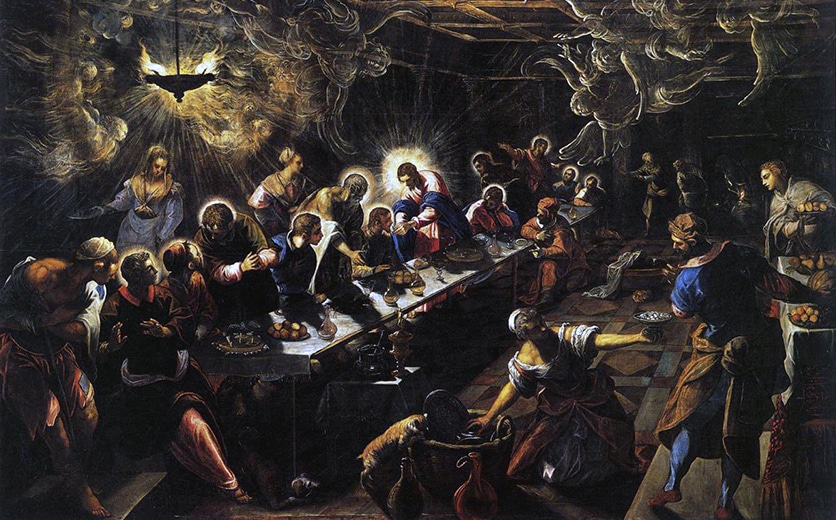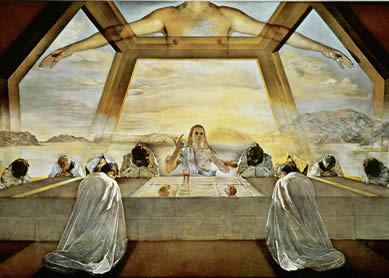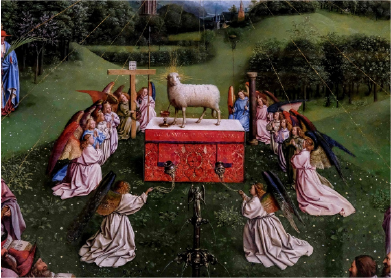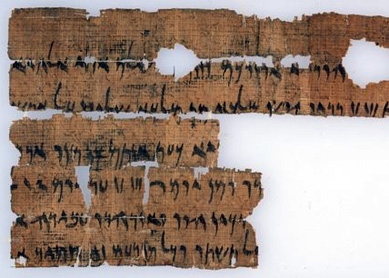In the ancient Mediterranean culture, meals were important occasions for developing and cultivating fellowship. According to the New Testament gospels, Jesus used meals and feeding miracles to create an inclusive society that is based on the belief that God cares for all (Mark 2:15–17; 6:30–44; 8:1–9; Luke 7:36–50, etc.). His last meal with the twelve disciples held special significance. It not only created fellowship with his disciples; it also pointed to the redemptive meaning of his impending death on the cross.
According to four New Testament texts (Matt 26:26–29; Mark 14:22–25; Luke 22:17–20; 1 Cor 11:23–26), the Last Supper consists of bread and a cup of wine. For these authors, God’s grace becomes visible in this meal and can be perceived in an emotive fashion.
What is the meaning of breaking bread?
The words that Jesus spoke according to the Last Supper narratives convey the meaning of the bread. Jesus took a loaf of bread, gave a blessing, broke it, and handed it to the twelve disciples saying, “Take; this is my body” (Mark 14:22; compare Matt 26:26: “Take, eat”). Luke 22:19 states that Jesus’s “body … is given for you.” All of these different words reveal that Jesus understood his life and death to be redemptive for the world. In the words of the Fourth Gospel, he literally becomes “the bread of life” for humanity (John 6:35, 48).
What is the meaning of the cup of wine?
In these narratives, Jesus also took a cup of wine, gave thanks, and handed it to his disciples. After they drank, he spoke words about the meaning of the cup (Mark 14:24). These words belong to two different traditions about covenants in the Hebrew Bible:
- According to Mark 14:24 and Matt 26:28, Jesus called the wine “my blood of the covenant.” Similar words had been used in the Torah to describe the covenant at Mount Sinai (Exod 24:8). There, Moses had sprinkled sacrificial blood of the covenant onto the Israelites to establish a bond with God.
- According to Luke 22:20 and 1 Cor 11:25, Jesus said: “This cup … is the new covenant in my blood.” These words draw on Jer 31:31, which promises a new covenant that will be written on the hearts of the Israelites.
In the context of the Last Supper narratives, both of these references indicated that those who drank the wine—a traditional substitute for blood (Gen 49:11; Deut 32:14)—would be in a permanent relationship with Jesus. Physical contact with this wine by way of drinking brings about “forgiveness of sins” (Matt 26:28), establishing Jesus’s new unilateral covenant with the participants through ritual purification. The words “poured out” (Matt 26:28 // Mark 14:24 // Luke 22:20) point to the impending death of Jesus on the cross, likewise suggesting its redemptive significance.
What is the connection between the Last Supper and Passover?
The three synoptic gospels present the Last Supper in the context of a Passover meal that Jesus celebrated with his twelve disciples (for example, Mark 14:12–16). The traditional Passover was an annual affirmation of early Jewish corporate identity based on the narrated memory of Israel’s salvation in the exodus. In the Last Supper narratives, Jesus himself becomes the focus and agent of salvation through the meal “in remembrance” of him (Luke 22:19; 1 Cor 11:24–25). Hence, the proclamation of his life, death, and resurrection are all important components of this celebration with redemptive purpose for the Christian community. However, Paul’s Last Supper tradition in 1 Cor 11:23–26 predates that of the synoptic gospels. It contains no explicit reference to the Passover. Furthermore, the use of the Greek term artos (Matt 26:26 // Mark 14:22 // Luke 22:19 // 1Cor 11:23) to designate the bread that Jesus broke signifies leavened bread that was not permitted according to the early Jewish Passover tradition. Therefore, this particular historical context is most likely secondary.
Bibliography
- Eberhart, Christian A. “Sacrifice and the New Testament.” St. Andrews Encyclopaedia of Theology, 2023.
- Eberhart, Christian A. What a Difference a Meal Makes: The Last Supper in the Bible and in the Christian Church. Houston, TX: Lucid Books, 2016.
- Pitre, Brant. Jesus and the Jewish Roots of the Eucharist: Unlocking the Secrets of the Last Supper. New York: Doubleday, 2011.





